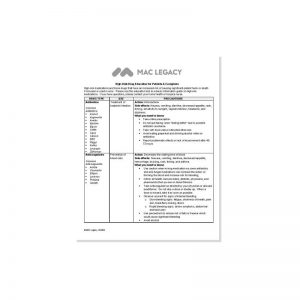As the new OASIS data set–OASIS-E—is approaching for implementation on January 1, 2023, Medicare-certified home health agencies must prepare their clinicians and quality assurance staff for the changes. One of the new items is N0415, High-Risk Drug Classes. This item identifies if the patient is taking any of six high-risk medications, and if there is…
As the new OASIS data set–OASIS-E—is approaching for implementation on January 1, 2023, Medicare-certified home health agencies must prepare their clinicians and quality assurance staff for the changes. One of the new items is N0415, High-Risk Drug Classes. This item identifies if the patient is taking any of six high-risk medications, and if there is documentation regarding the indication for the patient’s use of the drug. The six classes are antipsychotics, anticoagulants, antibiotics, opioids, antiplatelets, and hypoglycemics (including insulin). Some of the interesting rules for this data item include: the medication is any route, any setting, and applies to newly prescribed medications even if they are not in the home and/or the first dose has not yet been taken. Combination drugs in which contain a high-risk medication should be documented in that category regardless of the intended use. Currently, there is no CMS guidance to indicate how the clinician is to determine indication for use. At this point, medical records, discharge summaries, and prescription labels seem to be appropriate sources. Additional guidance will surely appear in future quarterly OASIS Q&As. Until then, home health agencies need to ensure clinicians are educated on this change and medication policies reflect these specific high-risk medications.

